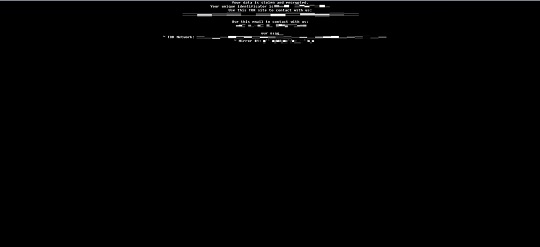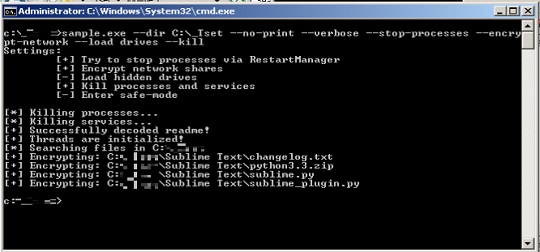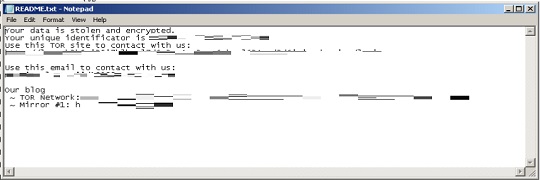Ransom.Win32.LYNXRANSOM.THGBIBD
Ransom:Win32/LynxCrypt.PA!MTB (MICROSOFT)
Windows


Threat Type: Ransomware
Destructiveness: No
Encrypted: No
In the wild: Yes
OVERVIEW
This Ransomware drops files as ransom note. It avoids encrypting files with the following file extensions.
TECHNICAL DETAILS
Installation
This Ransomware drops the following files:
- %User Temp%\background-image.jpg
- %System%\spool\PRINTERS\00002.SPL
- %System%\spool\PRINTERS\00002.SHD
(Note: %User Temp% is the current user's Temp folder, which is usually C:\Documents and Settings\{user name}\Local Settings\Temp on Windows 2000(32-bit), XP, and Server 2003(32-bit), or C:\Users\{user name}\AppData\Local\Temp on Windows Vista, 7, 8, 8.1, 2008(64-bit), 2012(64-bit) and 10(64-bit).. %System% is the Windows system folder, where it usually is C:\Windows\System32 on all Windows operating system versions.)
Other System Modifications
This Ransomware changes the desktop wallpaper by modifying the following registry entries:
HKEY_CURRENT_USER\Control Panel\Desktop
Wallpaper = %User Temp%\background-image.jpg
It sets the system's desktop wallpaper to the following image:
- %User Temp%\background-image.jpg

Process Termination
This Ransomware terminates the following services if found on the affected system:
- backup
- exchange
- sql
- veeam
It terminates the following processes if found running in the affected system's memory:
- backup
- exchange
- java
- notepad
- sql
- veeam
Information Theft
This Ransomware accepts the following parameters:
- --file
→ Encrypt only specified file - --dir
→ Encrypt only specified directory - --help → Print the help message
- --verbose → Display logs in the console
- --stop-processes → Uses Windows Restart Manager APIs to close processes or shut down Windows services that may be keeping a file open and preventing encryption.
- --encrypt-network → Encrypt network shares
- --load-drives → Load hidden drives
- --hide-cmd → No function as of this writing
- --no-background → Disable changing background image
- --no-print → Disable printing ransom note on printers
- --kill → Kill processes/services
- --safe-mode → No function as of this writing
- --mode → No function as of this writing
Other Details
This Ransomware does the following:
- It terminates all dependent services to the following services:
- backup
- exchange
- sql
- veeam
- It encrypts removable, fixed, remote drives.
- It empties the Recycle Bin
- It enumerates printers in the network to print the ransom note.
- It deletes volume shadow copies using the DeviceIoControl API.
- It displays its logs on a console when the parameter --verbose is used:

Ransomware Routine
This Ransomware avoids encrypting files found in the following folders:
- $RECYCLE.BIN
- appdata
- program files
- program files (x86)
It appends the following extension to the file name of the encrypted files:
- .LYNX
It drops the following file(s) as ransom note:
- {Malware Traversed Path}\README.txt

It avoids encrypting files with the following file extensions:
- .dll
- .exe
- .lynx
- .msi
SOLUTION
Step 1
Trend Micro Predictive Machine Learning detects and blocks malware at the first sign of its existence, before it executes on your system. When enabled, your Trend Micro product detects this malware under the following machine learning name:
- TROJ.Win32.TRX.XXPE50FFF083
Step 2
Before doing any scans, Windows 7, Windows 8, Windows 8.1, and Windows 10 users must disable System Restore to allow full scanning of their computers.
Step 3
Note that not all files, folders, and registry keys and entries are installed on your computer during this malware's/spyware's/grayware's execution. This may be due to incomplete installation or other operating system conditions. If you do not find the same files/folders/registry information, please proceed to the next step.
Step 4
Search and delete these files
- %User Temp%\background-image.jpg
- {Malware Traversed Path}\README.txt
- %System%\spool\PRINTERS\00002.SPL
- %System%\spool\PRINTERS\00002.SHD
Step 5
Scan your computer with your Trend Micro product to delete files detected as Ransom.Win32.LYNXRANSOM.THGBIBD. If the detected files have already been cleaned, deleted, or quarantined by your Trend Micro product, no further step is required. You may opt to simply delete the quarantined files. Please check the following Trend Micro Support pages for more information:
Step 6
Reset your Desktop properties
Step 7
Restore encrypted files from backup.
Did this description help? Tell us how we did.


